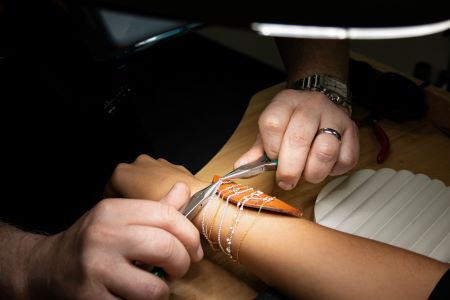Permanent jewellery is custom-fi tted, clasp less jewellery that is welded directly onto the wearer. Most commonly, permanent jewellery includes bracelets, anklets and necklaces, made from high-quality materials such as gold, sterling silver and platinum.
If you’re thinking of adding permanent jewellery to your offering or you’re just curious about how it’s done, here is the top 10 FAQs.
What is permanent jewellery?
Permanent jewellery is a custom-fit chain that’s welded directly onto the wrist, ankle or neck. Instead of a traditional clasp, the ends are joined together with a small weld, creating a smooth, seamless finish. It’s comfortable, low-maintenance and has a modern appeal which has made it so popular.
How is it fitted?
The process is straightforward. A jeweller measures the chosen chain for the perfect fit and then uses a specialised welding tool to join the ends. The weld is small, secure and sits comfortably against the skin. It’s a quick and safe procedure.
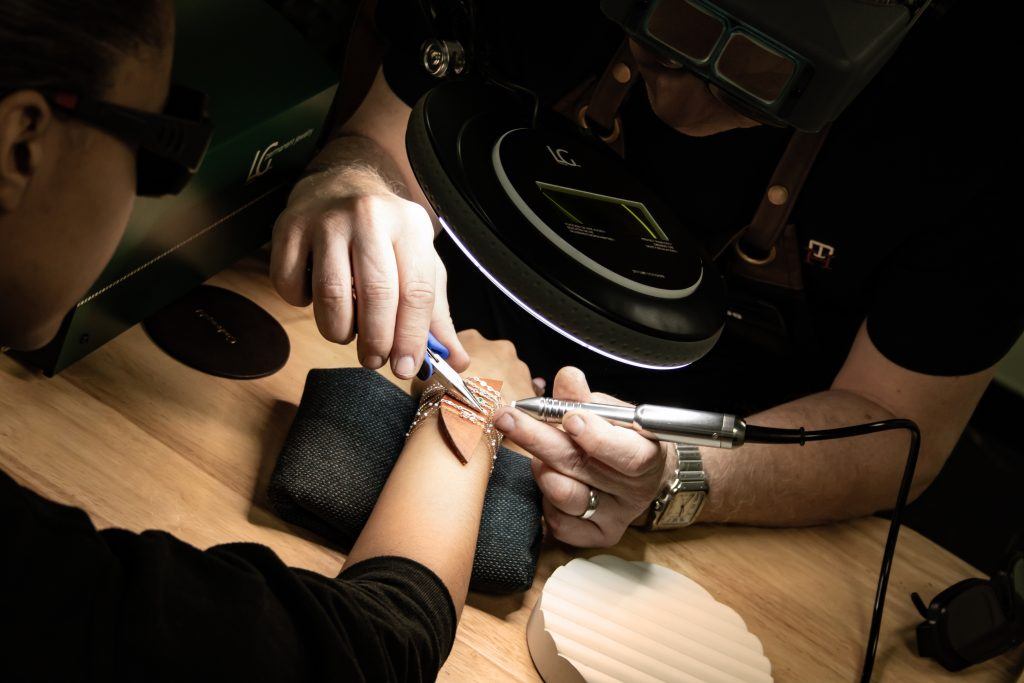
Is the welding safe?
Yes. The weld itself is a tiny spark that fuses the chain’s ends together but never touches the skin. The process is completely safe and usually over in seconds.
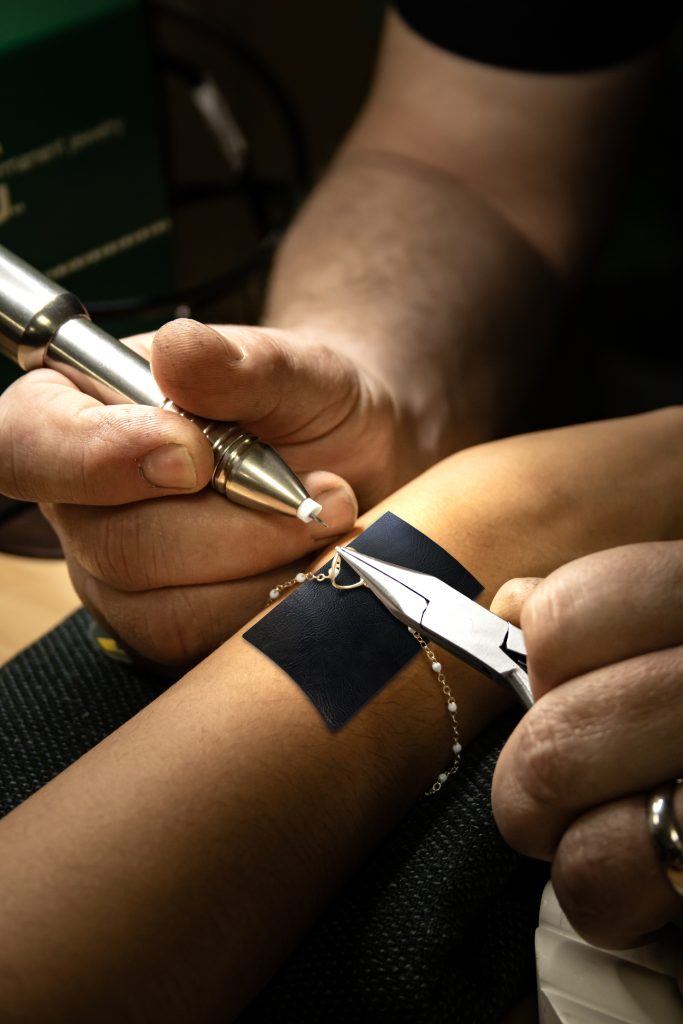
Can it be removed?
Despite the name, permanent jewellery isn’t forever. If it needs to be removed, because of a medical procedure, a job requirement or simply personal choice, it can be cut off at the weld point with wire cutters.
What about medical procedures and travel?
For medical scans like MRIs or X-rays, it’s important to check with your healthcare provider, as some scans require jewellery to be removed. If you do need to remove it, you can always have it re-welded afterwards.
When travelling, permanent jewellery generally doesn’t set off airport security scanners, especially when made from fine metals like gold and silver. But as policies can vary, it’s worth double-checking with your airline or travel provider.
How durable is It?
Permanent jewellery is designed to be worn every day. With normal care, it can last for years. That said, like any piece of jewellery, it can be damaged by rough handling or heavy impact.
What materials are used in permanent jewellery?
Most permanent jewellery is crafted from high-quality materials—typically 14ct gold, sterling silver or gold-filled chains. These metals are tarnish-resistant and long-lasting, making them ideal for a piece designed to be worn 24/7.
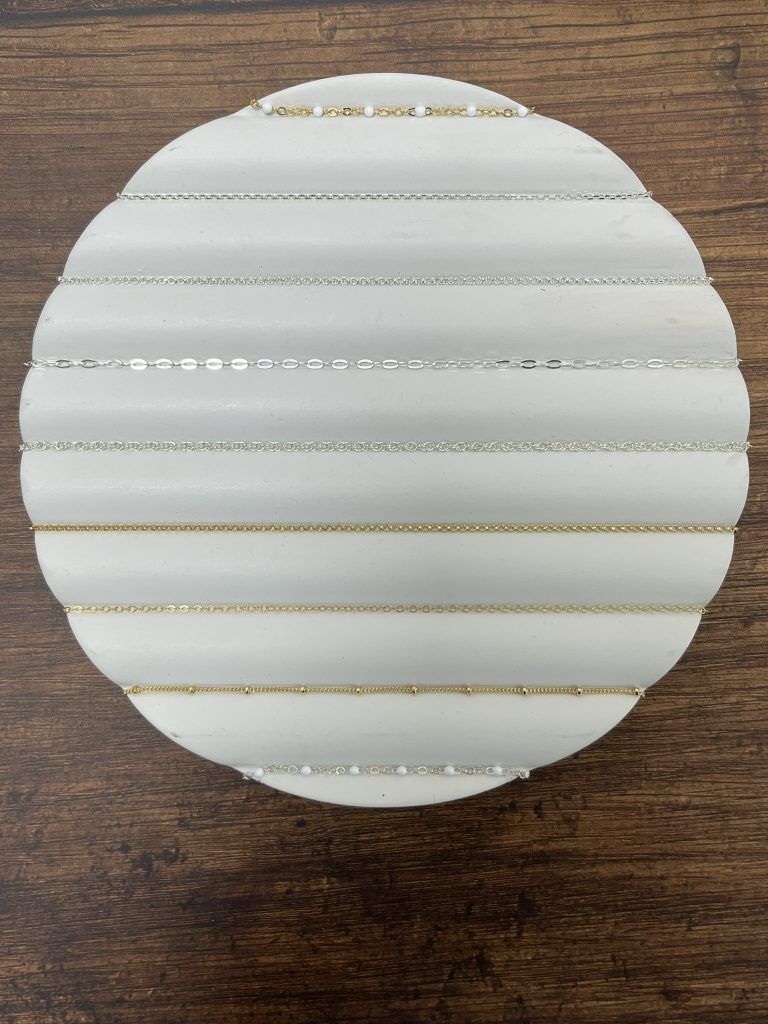
Can it be customised?
Personalisation is also a big part of the appeal. Many jewellers offer a range of chain styles and metal types, as well as charms or other additions, so customers can create something that feels personal and unique.
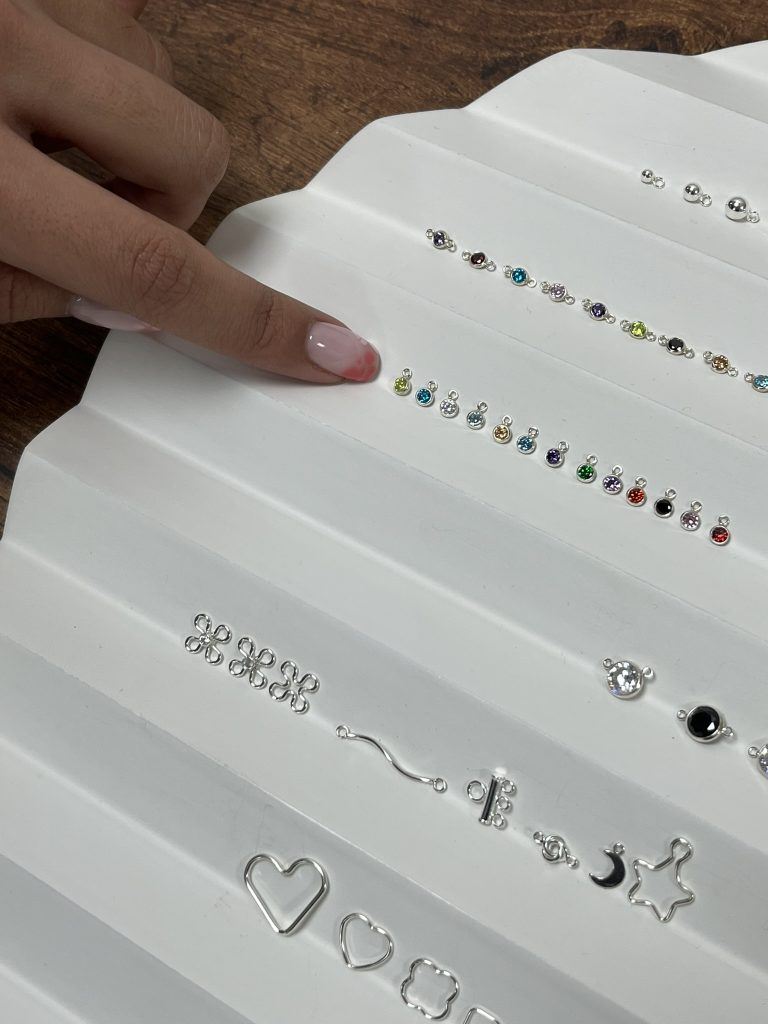
Is it suitable for everyone?
Permanent jewellery isn’t for everyone. Customers with metal allergies or those who need to remove jewellery frequently, for work, sports or medical reasons, might find it less practical. It’s always worth discussing these points with your customer before getting started.
Why offer permanent jewellery?
For jewellers, permanent jewellery offers a new way to connect with customers. It’s a service that creates repeat visits and offers a chance to help people celebrate special occasions, like birthdays, anniversaries or new beginnings.
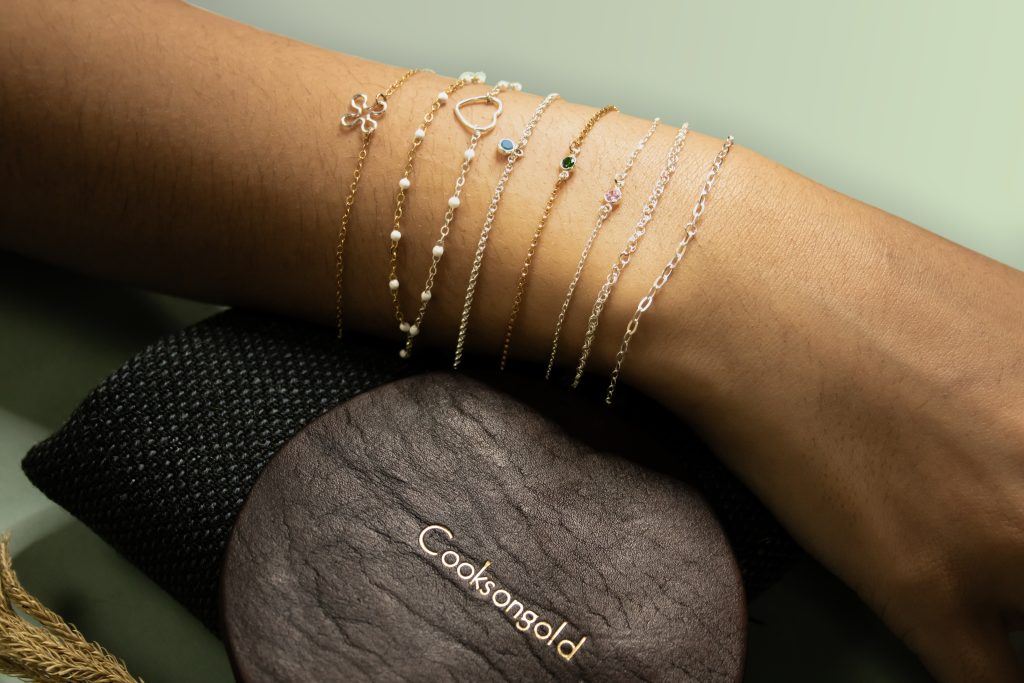
With the right materials and care, permanent jewellery can become a keepsake that customers treasure for years. And for your business, it’s a way to offer something unique in a competitive market.
For more information on our permanent jewellery offering, visit cooksongold.com/permanent-jewellery

Sian Brown
Sian has been hand making her award winning jewellery in the West Midlands for over 12 years. Sian spent 10 years in Birmingham’s historic Jewellery Quarter before relocating to a quiet Worcestershire village.

